
Written By:
 Dr. KK Aggarwal
Dr. KK Aggarwal
 Dr. KK Aggarwal
Dr. KK Aggarwal
Published On: 25 Apr, 2020 5:25 AM | Updated On: 01 Jan, 2026 1:23 PM
What is the Diet for Cirrhosis of the liver?
Liver Cirrhosis Diet
Cirrhotic patients frequently become malnourished as a result of changes in metabolism and digestive problems that develop when the liver deteriorates.
As a result, if you have this disease, what you eat and drink every day is very essential, because components like protein, salt, and sugar make your liver work harder—a demand it may no longer be able to fulfill.
The liver performs about 500 activities, making it one of the most important organs. When one's liver is damaged by cirrhosis, it is unable to fulfill one of its most essential functions: assisting your body in obtaining nourishment from the food you eat.
A cirrhosis diet can help you get enough nutrients, minimize the amount of work your liver has to do, avoid problems, and prevent future liver damage. According to research, persons with liver disease who are malnourished are more likely to have cirrhosis consequences, including death.
Also know - What cause Liver Damage
Food to avoid / have in Liver disease
Your cirrhosis diet will need to be customized depending on your overall health and specific demands. However, some fundamental dietary principles will help shape this eating plan:
1. Abstinence from Alcohol
Any quantity is considered dangerous for someone with cirrhosis because it has the potential to induce more liver damage—even liver failure. Drinking can also lead to malnutrition and other health problems.
2. Limiting Fats
Bile, a yellow-green fluid produced by the liver, is used by the body to break down fats. When the liver is harmed, the generation and supply of bile may be compromised, resulting in digestive problems. A sluggish liver has a difficult time digesting a high-fat diet. In moderation, though, healthy fats can be consumed.
3. Avoiding Raw or Undercooked Meat / Seafood
People with cirrhosis have reduced immune function, germs and viruses found in these foods can lead to a potentially severe illness.
4. Consume Foods from all Dietary Groups
These include grains, fruits, vegetables, meat and beans, milk, and oil.
5. Consume Fiber-rich Foods
Fiber promotes the proper functioning of your liver. Fruits, vegetables, whole grain bread, grains, and cereals help meet your body's fiber requirements.
6. Drink Plenty of Water
It keeps you hydrated and helps your liver operate properly.
Time Duration for Liver Cirrhosis Diet
If you are at risk for liver disease, your doctor may advise you to adhere to a cirrhosis diet even if you are not feeling ill. In the early stages of liver disease (compensated phase), there are generally no symptoms.
Signs of liver illness may appear years later, and only after serious liver damage has occurred (decompensated phase). Altering your diet will only assist avoid further liver damage and not repair what has already occurred, you will most likely need to be on a cirrhosis diet for a long period.
Liver disease recovery Diet plan : What to Eat?
If you’re following a cirrhosis diet, there are some foods and beverages you’ll need to strictly avoid. However, you’ll have your choice of many nutritious and tasty foods, including fresh produce, whole grains, and plant-based protein.
Compliant Foods
● Fruits and vegetables (raw or cooked without butter, oil, or salt)
● Eggs, egg whites
● Cooked fish (salmon, tuna)
● Lean chicken or turkey (without the skin)
● Low-fat Greek yogurt
● Cream cheese, ricotta
● Hard cheeses (cheddar, mozzarella)
● Nuts and seeds (unsalted)
● Dried beans and legumes
● Nut butter (unsalted)
● Tofu
● Fortified milk alternatives (almond, soy, rice)
● Margarine
● Oats
● Whole grain bread, crackers, and cereals
● Brown rice
● Olive oil
● Fresh herbs
● Low-fat milk
● Garlic
● Ginger
● Quinoa, couscous
● Granola and cereal bars
● Coconut water
● Meal/nutritional supplements, as approved
Non-Compliant Foods
● Raw or partially raw fish and shellfish (e.g., oysters, clams)
● Fast food, fried food
● Red meat
● Canned food (meat, soup, vegetables)
● Packaged, processed snacks and meals (incl. frozen)
● Hot dogs, sausage, lunchmeat
● Sauerkraut, pickles
● Buttermilk
● Tomato sauce or paste
● Instant hot cereal or oatmeal
● Potato chips, pretzels, rice cakes, crackers, popcorn
● Refined white flour pasta, bread, and white rice
● Breading, coating, and stuffing mixes
● Full-fat dairy products
● Bread, biscuit, pancake, and baked good mixes
● Pastries, cake, cookies, muffins, doughnuts
● American, Parmesan, Swiss, blue, feta, cottage cheese, cheese slices, or spreads
● Pudding, custard, or frosting mixes
● Table salt, sea salt, mixed seasonings
● Ketchup, soy sauce, salsa, salad dressing, steak sauce
● Bouillon cubes, broth, gravy, and stock
● Caffeinated tea, coffee, and soft drinks
● Alcohol
must read- how to maintain Healthy Liver
10 Healthy Supermarket Shopping Hints for a Liver Cirrhosis Diet
● Choose vegetables and fruits that do not have high-calorie sauces or additional salt and sweeteners.
● Choose whole grains that are high in fiber.
● Select chicken and fish without skin that have been prepared healthfully.
● Choose lean cuts of meat over ones rich in fat.
● Eat fish at least twice a week, preferably fish high in omega-3 fatty acids (e.g. salmon, trout, and herring).
● Check to see if your dairy is fat-free (skim) or low-fat (1% ).
● To minimize trans fat, avoid meals that include partly hydrogenated vegetable oils. Limit saturated fat and trans fat by substituting them with healthier fats (monounsaturated and polyunsaturated).
● Reduce your intake of sugary beverages and meals.
● Reduce intake of salt.
Meal Timings & Recommendations for Liver Cirrhosis Diet
Malnourishment can result from liver illness, therefore your doctor may advise you to eat more calories.
If you don't feel like eating larger meals to boost your calorie intake, consider eating small, regular meals and snacks throughout the day.
Some patients with liver cirrhosis have nighttime awakenings. They may stay up for lengthy periods and then snooze during the day. If you wake up in the middle of the night, taking a late-night snack (particularly those expressly prepared for this reason) might be beneficial for persons with cirrhosis.
If your sleep routine is disrupted, make sure you organize your meals around when you are awake, whether during the day or at night. Try not to go more than a few hours without eating or snacking.
Cooking Hints for Liver Cirrhosis Diet
● Try grilling or boiling vegetables without using any oil or butter.
● Use fresh herbs and spices instead of table salt if you're limiting your sodium consumption as part of a cirrhosis diet.
● If you're used to adding salt to your diet and are having trouble breaking the habit, your doctor may allow you to use a salt replacement.
● When preparing beef, start with lean cuts. Skinless chicken is a better choice than red meat.
● Depending on how it's prepared, you might be able to eat modest quantities of beef on occasion. Grilling meat instead of frying it in oil or butter, for example, lower the fat level and keeps it from becoming too oily for a cirrhosis diet.
● In addition to avoiding raw or partly cooked meat and seafood, use basic food handling and safety procedures to decrease your risk of foodborne illness.
The Bottom Line
If you are suffering from liver cirrhosis, reduce the workload on your liver by doing certain modifications to your diet and lifestyle. Avoiding alcohol is a must and consuming green vegetables to keep your liver healthy is a recommendation.
References:
1. https://www.verywellhealth.com/what-is-the-best-diet-for-cirrhosis-1760062
2. https://liverfoundation.org/for-patients/about-the-liver/health-wellness/nutrition/

Dr. KK Aggarwal
Recipient of Padma Shri, Vishwa Hindi Samman, National Science Communication Award and Dr B C Roy National Award, Dr Aggarwal is a physician, cardiologist, spiritual writer and motivational speaker. He was the Past President of the Indian Medical Association and President of Heart Care Foundation of India. He was also the Editor in Chief of the IJCP Group, Medtalks and eMediNexus







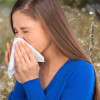
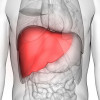

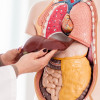
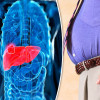
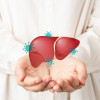
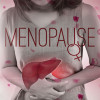
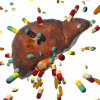
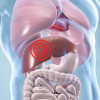
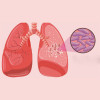
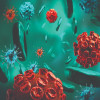

Please login to comment on this article